Dive into the fresh flavors of spring with this Fava Bean and Chickpea Salad, a protein-rich recipe that's vegan friendly and a definite crowd-pleaser. Ready in just 20 minutes, tender and slightly sweet favas - fresh or from frozen - pair perfectly with creamy chickpeas and a light lemon dressing, all complemented by chopped herbs and cucumber.
If you love bright summer salads, try my microgreens salad or peaches and burrata salad with your favorite greens!
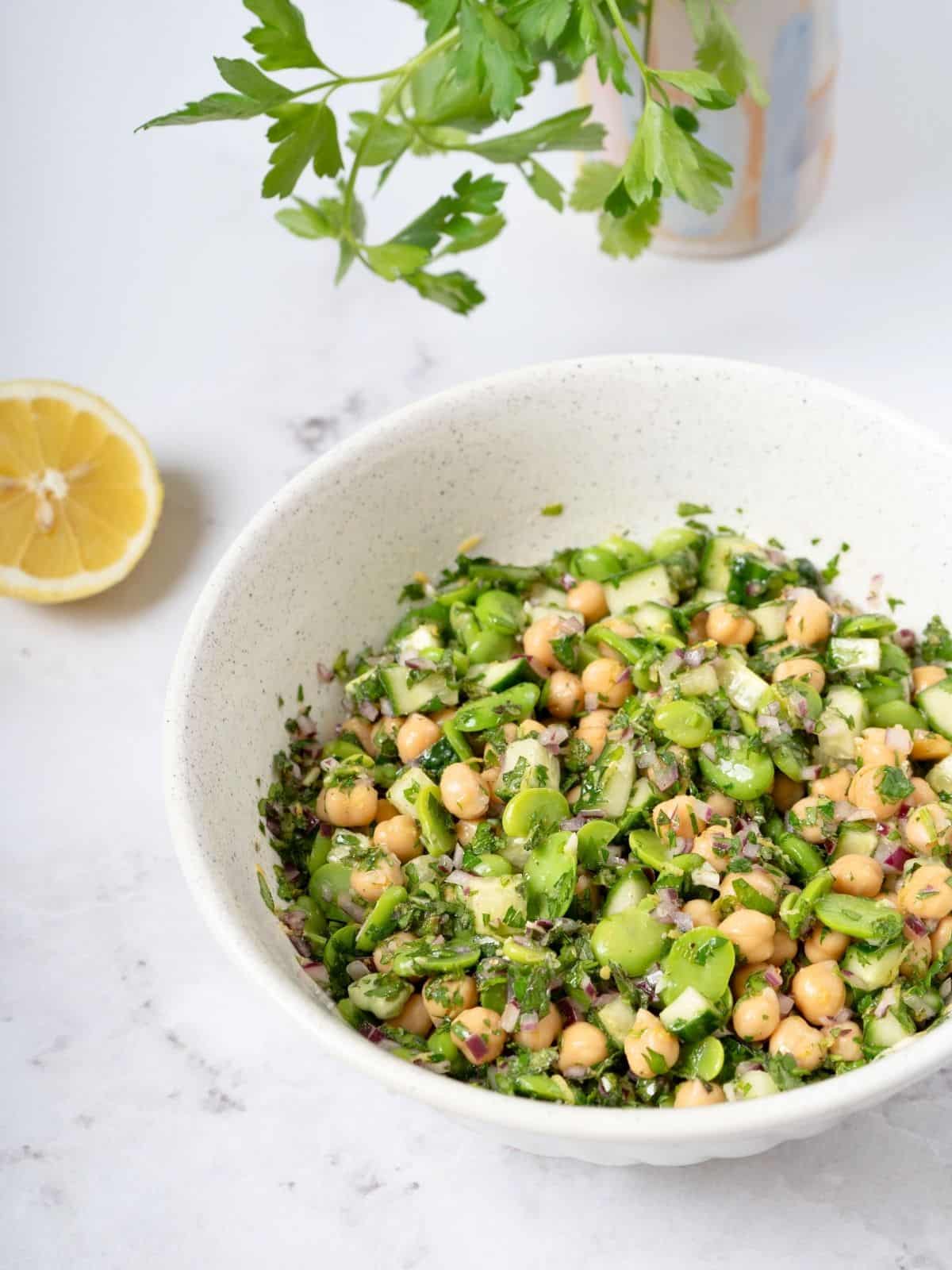
Jump to:
✔️ Why This Recipe is Great
Low Histamine Salad: other than the basic greans plus a low histamine dressing, there are tons of salad options out there, so I've started throwing some into the mix. Leave a comment if you want to see more low histamine salads on the site!
Vegan Protein: legumes and beans are all great sources of plant-based protein, and this salad packs them in as balanced as possible for a Mediterreanean-inspired salad that's a bit different from the usual go-to lentil stew or hummus.
Springtime Produce: though pretty much all of the chickpeas we eat in the US are initially dried or canned, fava beans can be found fresh in the US and Europe in the springtime (April to June) and are such a treat to both eat and prepare. Spring also happens to be an abundant time for local lemons in California, and fresh herbs all across the States - check out the low histamine herbs list for some ideas of other combinations to try in this recipe!
🌿 Ingredients
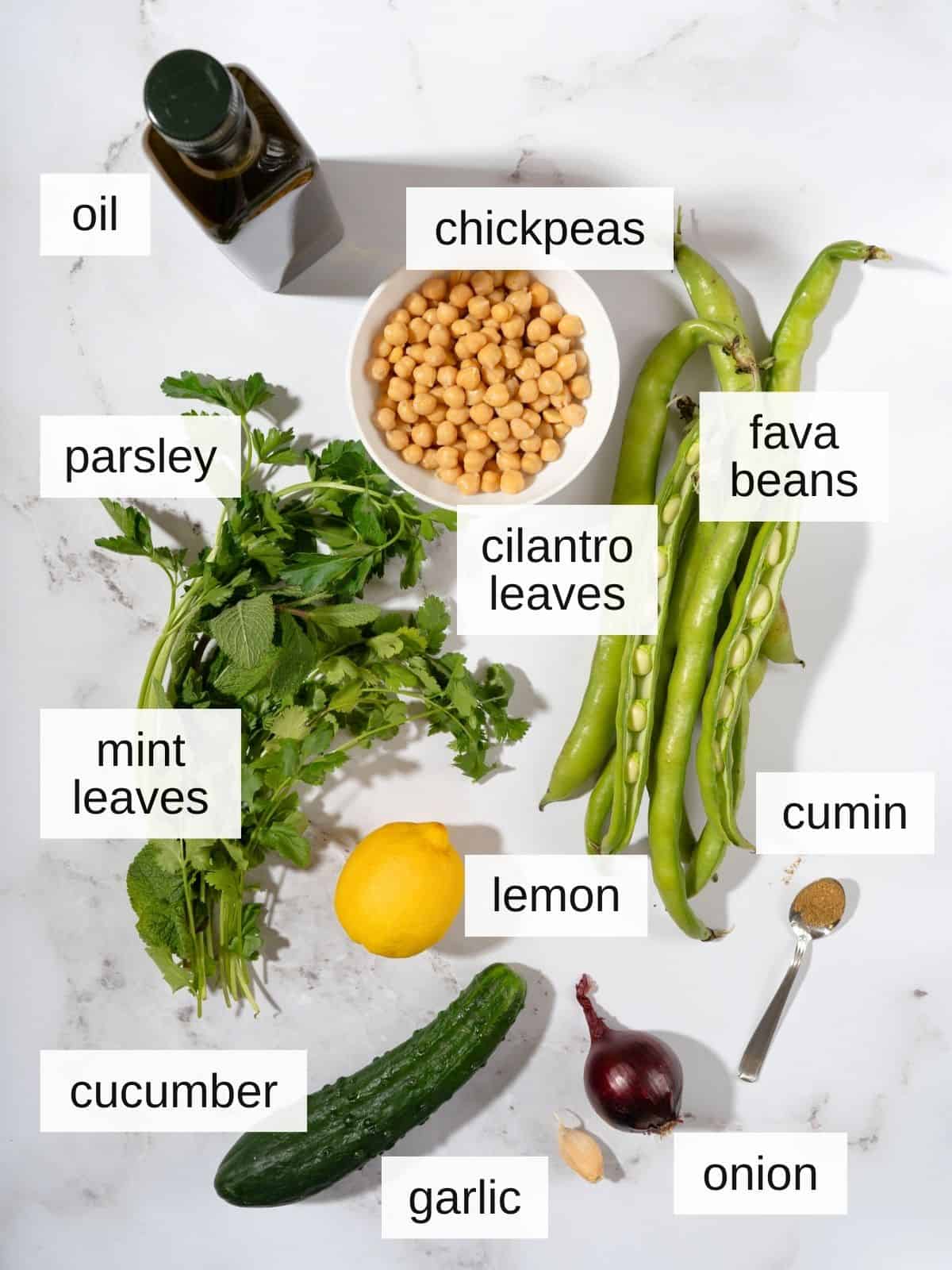
Fava Beans: also known as broad beans, these flavorful beans can be found fresh in the springtime at both Farmers Markets and a lot of organic markets. In the US they're grown heavily in Massachsetts, but you can also substitute broad beans for equal amounts of any white bean such as cannelini or borlotti.
Chickpeas (Garbanzo Beans): while you can use canned chickpeas if tolerated, I like to use the dry ones and just soak them overnight, and then cook them for an hour or so (I freeze the leftovers for quick use later on, or even for making hummus).
Fresh Herbs: these add a beautiful brightness to the salad and are packed with nutrients.
Neutral-Tasting Oil: unlike in most of my low histamine recipes, this oil is not for cooking, so you can use the highest-quality avocado or olive oil here and its nutrients will stay fully intact. I don't recommend coconut oil or any other low histamine oil that's similarly solid at room temperature.
Lemon Juice: the kick of acid from the lemon juice really accentuates the complexity of each herb's flavor, without adding too much flavor of its own. Additionally, lemon contains loads of vitamin C, a known mast cell stabilizer, though some people are sensitive to citrus-derived forms of it.
Ground Cumin: I have yet to find any studies that show it to have histamine-releasing qualities, but cumin can be contentious. It adds a delicious toasty, savory flavor to chickpea fava bean salad, however you can substitute nigella seeds if needed. Also known as black cumin, nigella seeds have a toasty, earthy flavor that would complement the herbs, beans, and lemon here just as well.
Cucumber: use any variety you like, but remember to peel most or all of the skin off if you don't like the chewy, sometimes fibrous texture it has.
Garlic: this can be left out if needed, but adds nice umami to the dish.
Onion: the slight bite of the onion really brings dimension to an otherwise standard bean salad, so you can use half as much onion or soak the fresh-chopped onion in cold water for a few minutes to tone down the 'spiciness,' but I don't recommend leaving it out altogether.
See recipe card for exact ingredients and quantities.
🌟 Substitutions and Variations
Oil - I used a fresh extra-virgin olive oil here, though you could alternately use the same amount of any oil you like (though something like flax oil might be too strong).
Fava Beans & Chickpeas - if you can't find one or both of these, you can substitute borlotti beans for etheir one, and substitute great white beans (cannelini beans) or Lima beans for the chickpeas and favas, respectively.
Fresh Herbs - you can really use any herbs you've like, but I chose a typical mix here - cilantro, parsley, and mint - all chopped and evenly-distributed, though lemon basil pesto would be an amazing alternative. Just be sure to use ¾ cup fresh chopped herbs or about ½ cup of room temperature pesto, and bear in mind how much each swap may change the overall flavor.
Lemon Juice - alternatives include apple cider vinegar or white vinegar, as tolerated.
Spices & Vegetables - you could theoretically leave out the cumin, alliums, and cucumber, but each one really adds a beautiful element to balance out the salad. I recommend instead adding up to ¼ teaspoon chili powder when adding the cumin for a hint of heat.
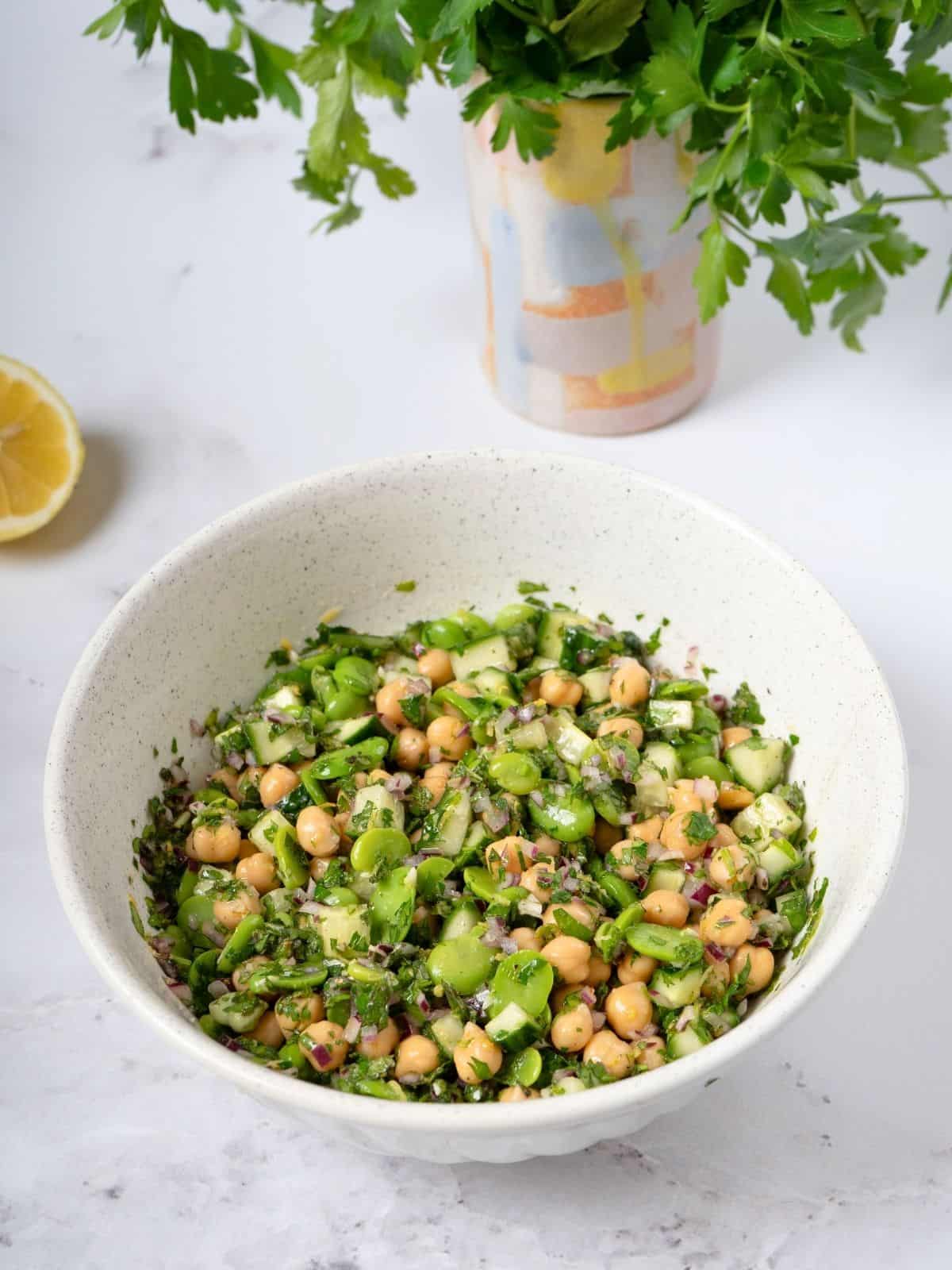
🔪 How to Prep Fresh Fava Beans
Note that you could also use frozen favas for this salad; see recipe instructions.
Fava beans - or broad beans - with their buttery texture and slightly nutty flavor, are a staple in many cuisines around the world, most notably Mediterranean cuisines. Preparing them for a salad requires a bit of effort, but it's well worth it for the flavor and nutritional benefits they bring to the bowl.
Fresh fava beans come in large pods, like peas, and need to be shelled before use. The beans inside have an outer skin that can be tough and bitter, which is why it's also essential to remove it to enjoy the tender, sweet bean inside.
- To prepare fresh fava beans, start by removing them from their pods. This can be done by snapping off the tip of the pod and pulling down the seam to reveal the beans inside. Discard the shells.
- Once you have your shelled fava beans, it's crucial to par-cook them to eliminate any lectins, which can be hard to digest when beans are raw. Boil the beans in salted water for about 1 to 2 minutes, then quickly transfer them to an ice bath to stop the cooking process and preserve their bright green color.
- After they've cooled, you'll need to peel off the outer skin. My preferred way to peel fava beans is to pinch the skin to create a tear and then squeeze the bean out. Another method is to make a small incision with a knife on the edge of the skin and then pop the bean out.
Using fresh fava beans is ideal for a salad because they have a slightly sweeter taste and firmer texture than frozen ones. Frozen fava beans are already shelled & blanched, saving you time, but they can have a mushier texture and less vibrant flavor. Whether you choose fresh or frozen, individual fava beans need to be cooked and peeled before adding to your salad.
🥗 How to Make Fava Bean and Chickpea Salad (Step-by-Step)
Step 1. Bring a pot of salted water to a boil. If using fresh favas, use this time to remove them from their pods (image 1). Once the water is boiling, add the fresh or frozen fava beans and cook for about 2-3 minutes, or until they are tender.
Drain and immediately plunge them into an ice water bath to stop the cooking process and to keep their color vibrant. Once cooled, drain the beans and peel off their outermost skins (if using fresh), and set aside (image 2).
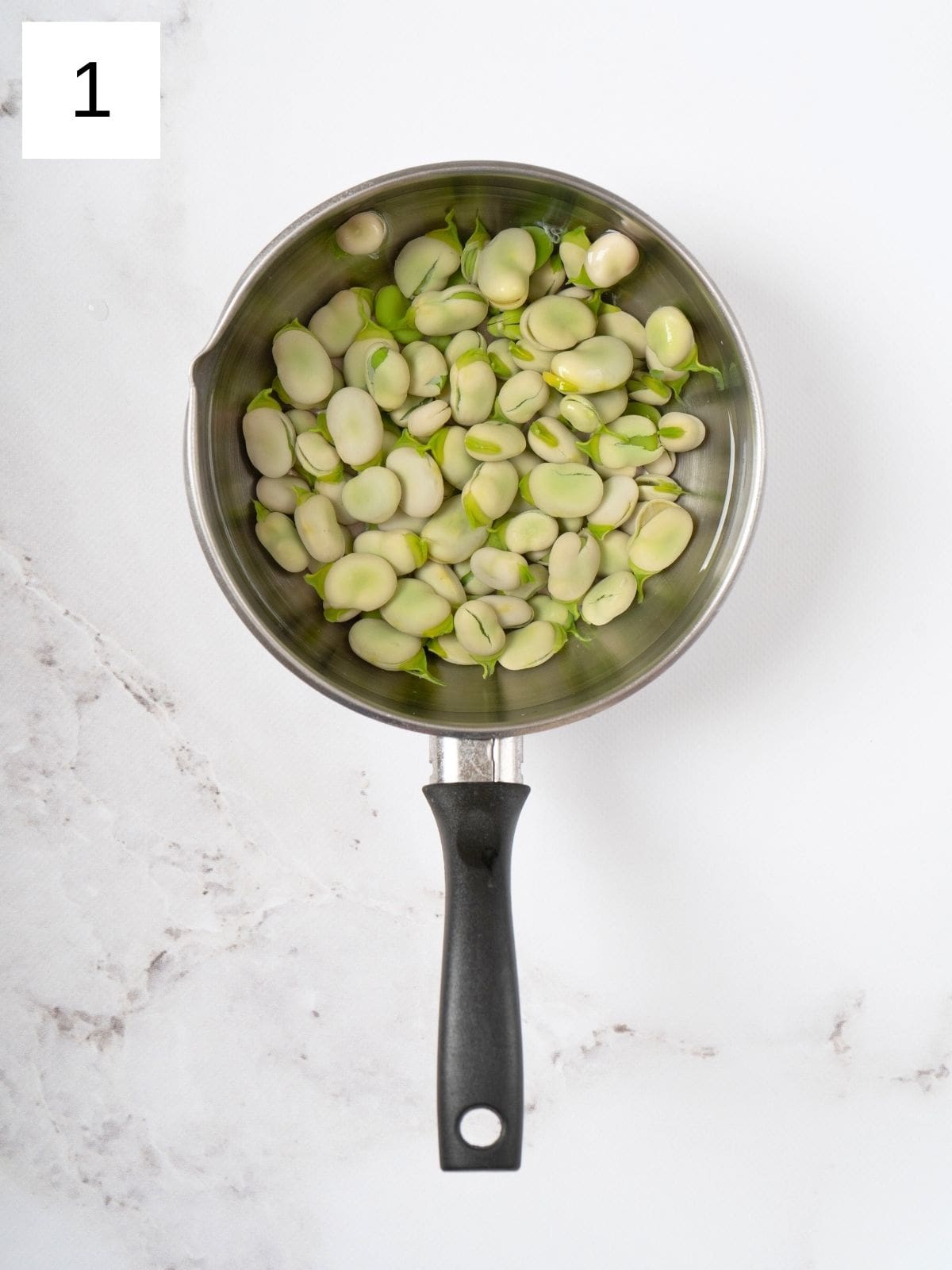
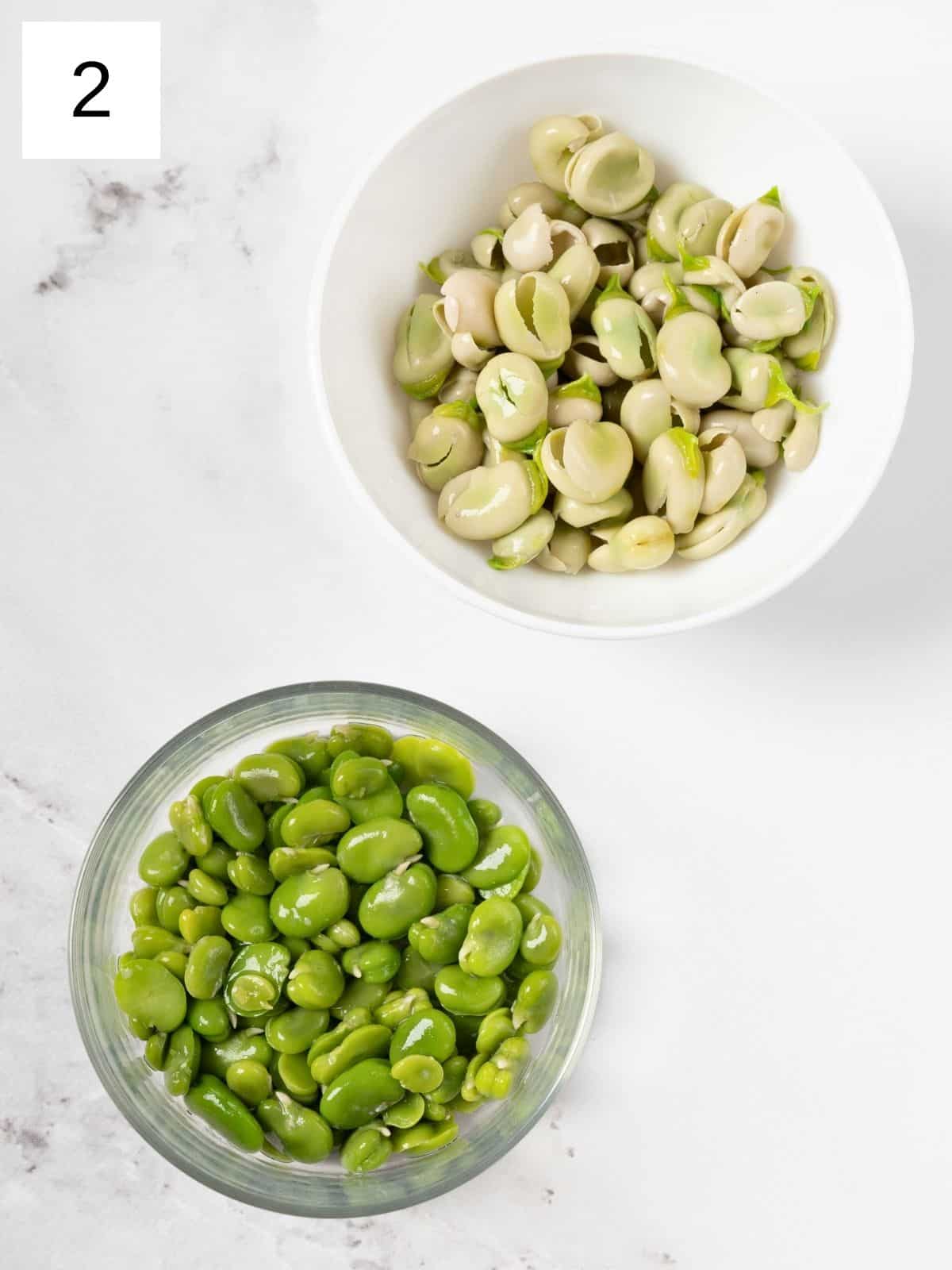
Step 2. While the fava beans are cooling, prepare the rest of the vegetables, if not using pre-cut veg. Peel the cucumber if desired, then dice it into bite-sized pieces. Peel and finely chop the red onion; microplane the garlic; then chop the fresh parsley, mint, and cilantro leaves and set aside (image 3).
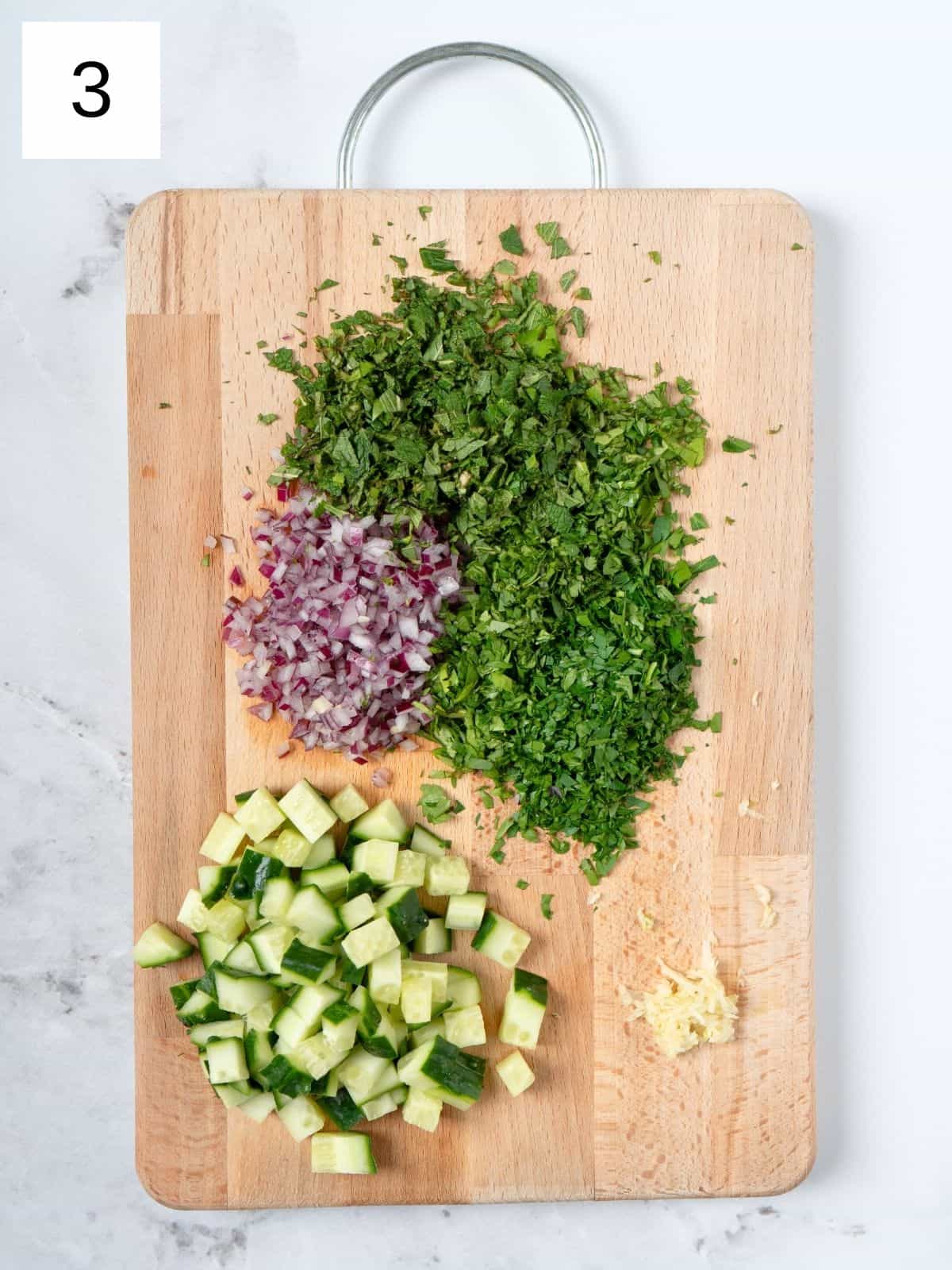
Step 3. In a large salad bowl, combine the cooked fava beans, rinsed chickpeas, diced cucumber, chopped red onion, and freshly chopped herbs (image 4).
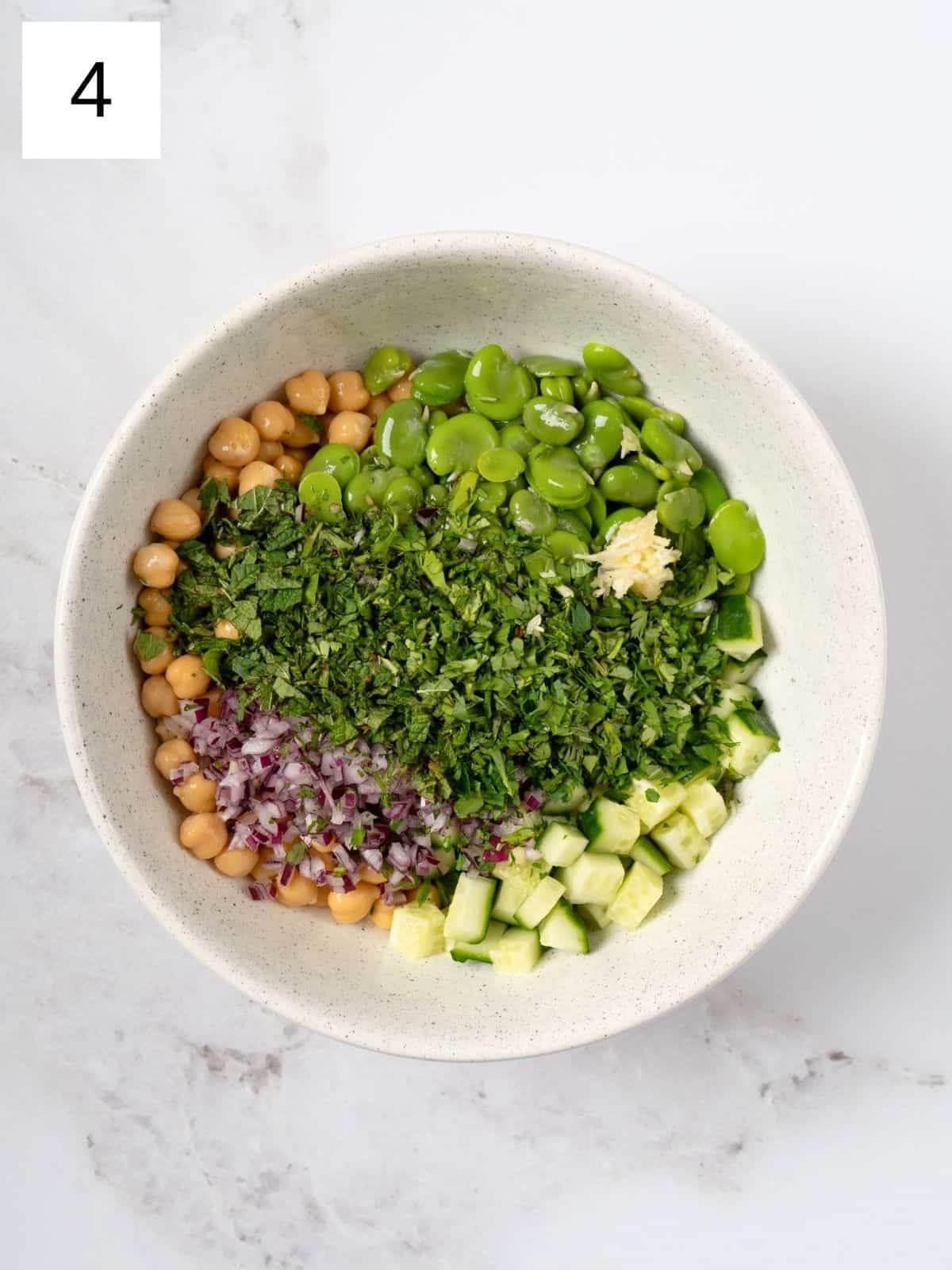
Step 4. In a separate smaller bowl, combine the fresh lemon juice, lemon zest, minced garlic, and ground cumin. Slowly whisk in the extra-virgin olive oil until the dressing is well combined (image 5). Season with salt to taste (start with a dash and work from there).
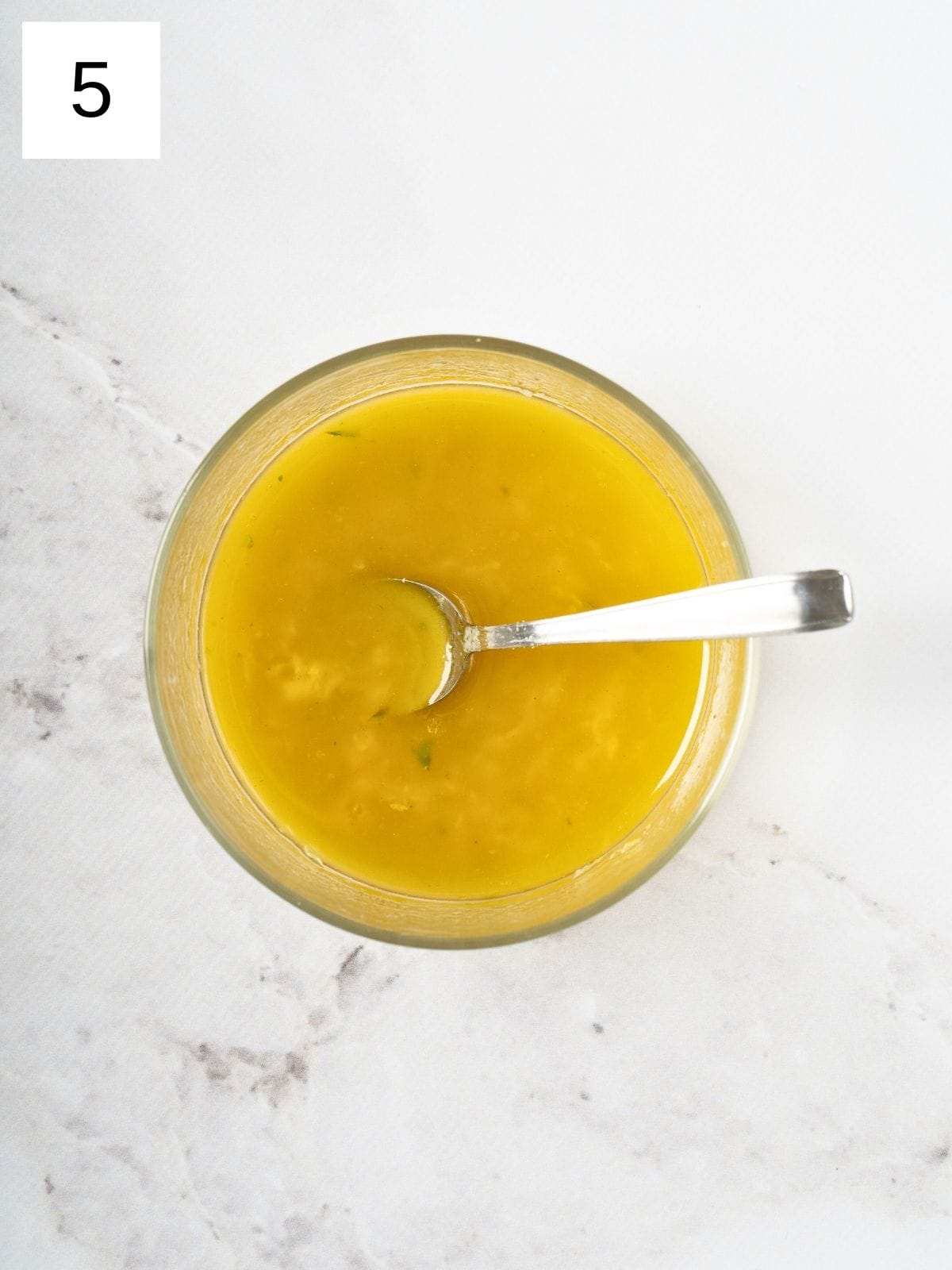
Step 5. Pour the dressing over the salad ingredients and gently toss to ensure everything is evenly coated. For the flavors to fully develop, optionally cover the salad and refrigerate for about 20 minutes.
This chilling time allows the ingredients to absorb the dressing and for the herbs to impart their full flavor to the salad, but it's not required at all. Otherwise, plate and serve as desired.
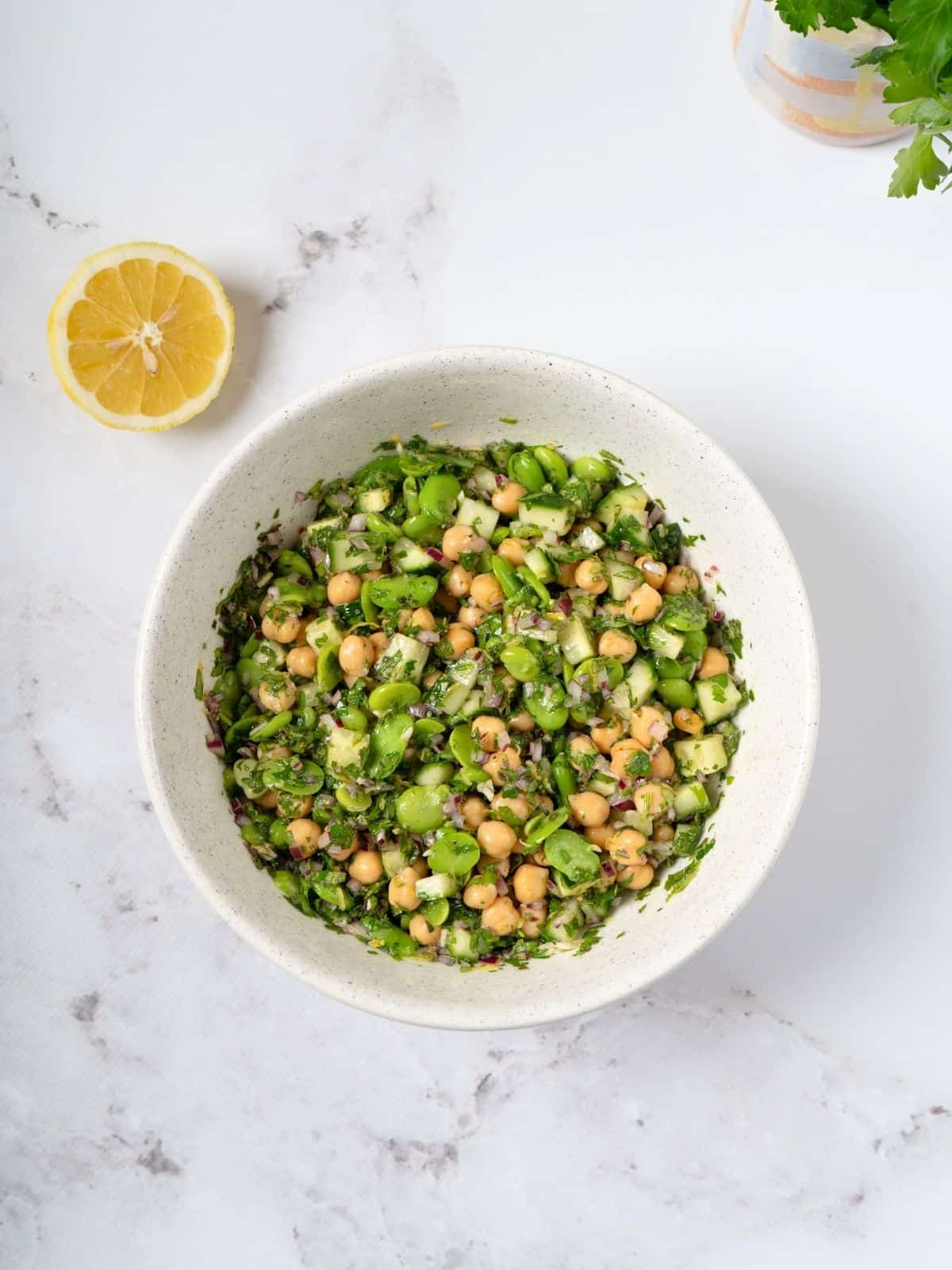
👨🏻🍳 Expert Notes & Tips
Bowl Size: for those who aren't as accustomed to tossing salads, be sure to use a much larger bowl for bringing the salad together than you use whne serving it.
Hate Cilantro?: if you think cilantro tastes like soap, just leave out the cilantro or replace it with more parsely - other great flavors that complement chickpea broad bean salad include lemon basil, arugula, or chervil.
How to Serve: this salad is absolutely fantastic served alongside any grilled meatsor hearty vegetables, or enjoyed between two slices of low histamine bread or in your favorite type of pita as a flavorful vegan filling.
❓ What to Serve With Fava Bean and Chickpea Salad
🙋 Frequently Asked Questions
Fresh fava beans should be soaked to help soften their tough outer skin, making it easier to remove before cooking. Soaking can also reduce the cooking time and help to break down some of the oligosaccharides present in the beans, which can cause stomach discomfort in some people. Don't forget to peel the individual beans before eating!
Store the beans, still in their pods, in a plastic bag in the refrigerator for up to several days. Just remember that before cooking, fresh fava beans must be shelled, or removed from their pods, and then after cooking each of the beans needs to be peeled.
People on dopaminergic medicines and other dopamine-increasing prescriptions should not eat fava beans. Additionally, anyone with a condition called Glucose-6-Phosphate Dehydrogenase (G6PD) deficiency should avoid eating broad beans. This genetic disorder is much more common in men, and affects the red blood cells; consuming broad beans can trigger a reaction known as favism, which can lead to symptoms like fatigue, jaundice, and in very severe cases, hemolytic anemia.
📖 Recipe

Fava Bean and Chickpea Salad (Without Tomatoes)
Equipment
- small pot with boiling water
- small knife
Ingredients
- 1 cup fresh or frozen shelled fava beans approximately 1 ¼ pounds in pods
- 8 oz. 220g cooked chickpeas fresh or frozen, canned if tolerated
- 1 small cucumber diced
- ½ small red onion finely chopped
- ¼ cup fresh parsley chopped
- ¼ cup fresh mint leaves chopped
- ¼ cup fresh cilantro leaves chopped
- 1 lemon zest and juice (~3 tablespoons lemon juice)
- ¼ cup extra-virgin olive oil
- 1 garlic clove minced (alt. 2 teaspoons toum sauce)
- ¼ teaspoon ground cumin
- Salt to taste
Instructions
- Bring a pot of salted water to a boil. If using fresh favas, use this time to remove them from their pods. Once the water is boiling, add the fresh or frozen fava beans and cook for about 2-3 minutes, or until they are tender. Drain and immediately plunge them into an ice water bath to stop the cooking process and to keep their color vibrant. Once cooled, drain the beans and peel off their outermost skins (if using fresh), and set aside.
- While the fava beans are cooling, prepare the rest of the vegetables, if not using pre-cut veg. Peel the cucumber if desired, then dice it into bite-sized pieces. Peel and finely chop the red onion; microplane the garlic; then chop the fresh parsley, mint, and cilantro leaves and set aside.
- In a large salad bowl, combine the cooked fava beans, rinsed chickpeas, diced cucumber, chopped red onion, and freshly chopped herbs.
- In a separate smaller bowl, combine the fresh lemon juice, lemon zest, minced garlic, and ground cumin. Slowly whisk in the extra-virgin olive oil until the dressing is well combined. Season with salt to taste (start with a dash and work from there).
- Pour the dressing over the salad ingredients and gently toss to ensure everything is evenly coated. For the flavors to fully develop, optionally cover the salad and refrigerate for about 20 minutes. This chilling time allows the ingredients to absorb the dressing and for the herbs to impart their full flavor to the salad. Otherwise, plate and serve as desired.

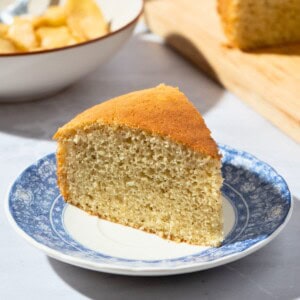












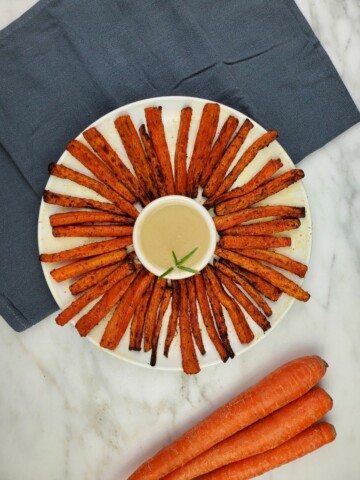
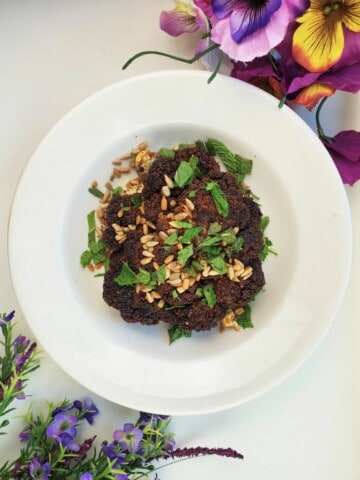
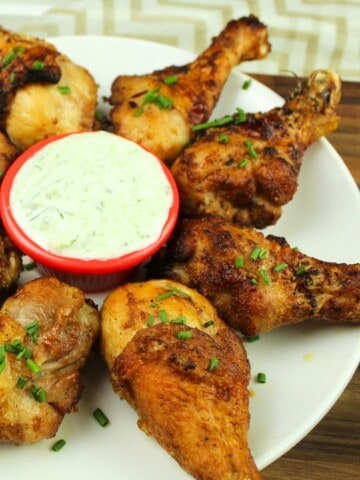

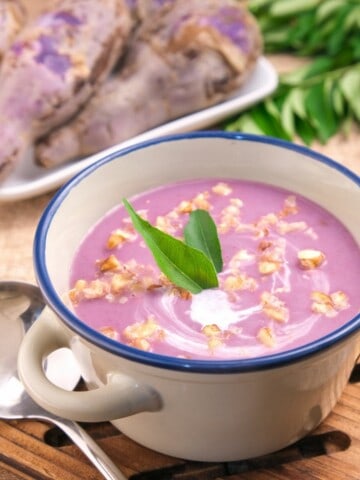
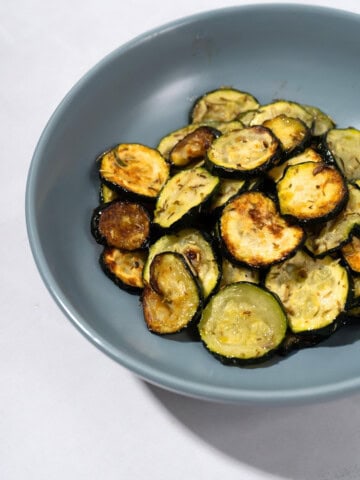
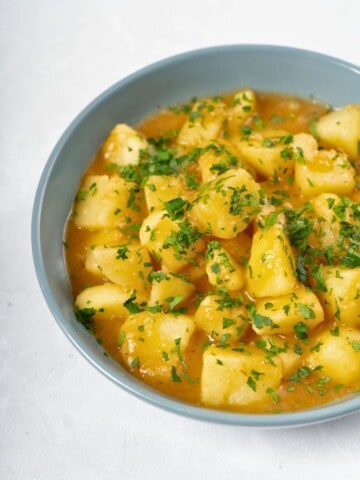

Comments
No Comments